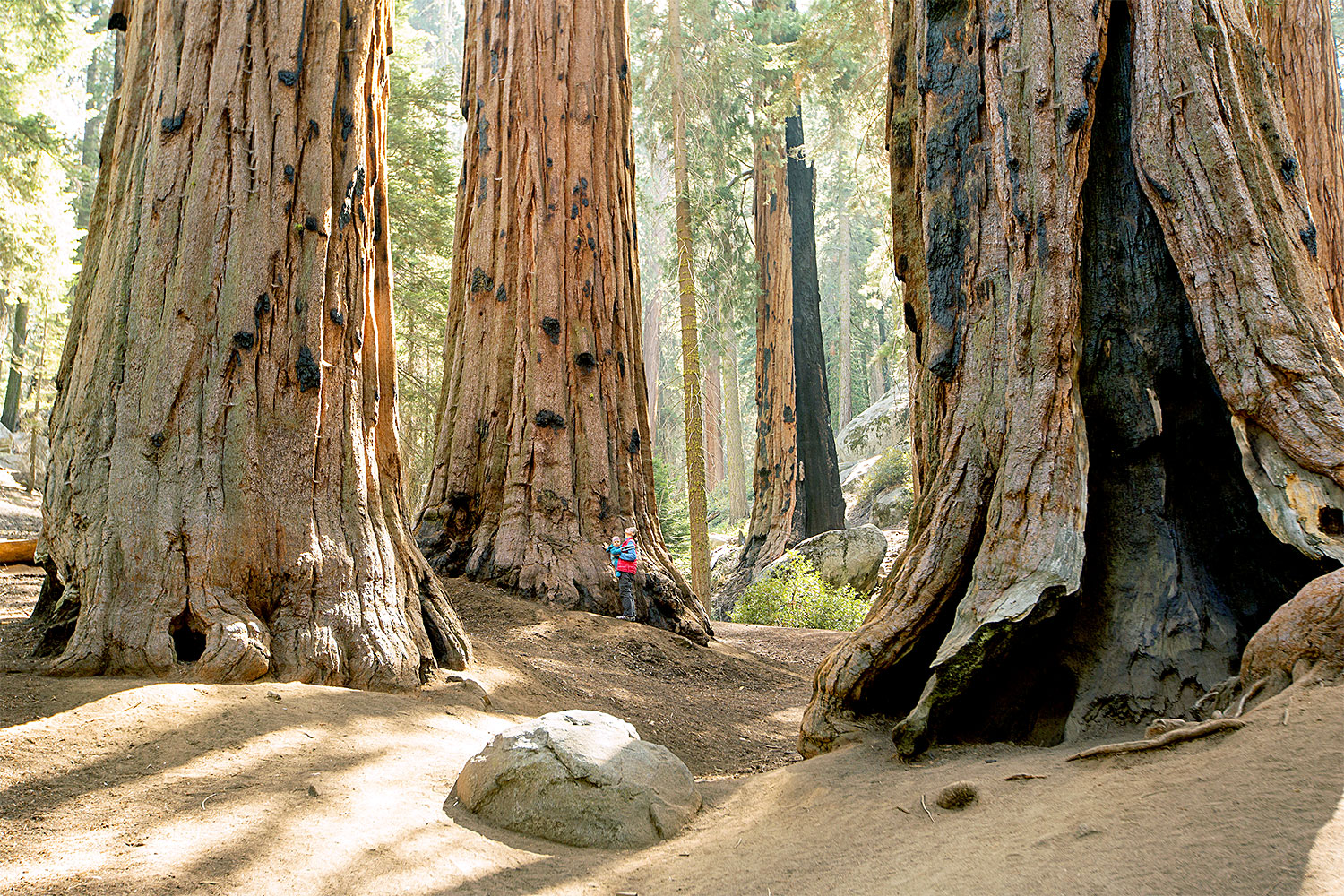In Yosemite National Park located in California, U.S., there are giant trees which are about 262 feet [80 m] high and 16 feet [5 m] in diameter. These trees are giant sequoias known as the “President Tree.” Among the giant sequoias, there are some that are even more than 3,000 years old. Interestingly, they have many burn marks on their trunks, surviving more than eighty forest fires—some lasting seven days.
In the forest where fires occur regularly due to friction between trees during the dry season or by lightning, the secret of these giant sequoias surviving there for so long lies in their soft bark which is 3 feet [1 m] thick. As they hold abundant water in their bark, they are resistant to being damaged by fire.

When there is a fire, their thick bark overcomes the flames, and the cones that hang at the end of their branches undergo a slight change. The hard cones gradually begin to open and winged seeds come out from the inside of the cones. Unlike other plants, giant sequoias spread their seeds via high heat. The seeds that fly along the ascending current made by the heat bud in the soil, which has now become much more fertile because of the fire, and sets deep roots. Once they overcome the fire, this life-threatening crisis turns into an opportunity to produce another life.
“We also rejoice in our sufferings, because we know that suffering produces perseverance; perseverance, character; and character, hope” Ro 5:3–4
To those who hold enough water of life—the words of God, suffering is not a crisis but an opportunity, and the blessings of eternal life and hope for salvation follow them. That is why we should rejoice even in trials.